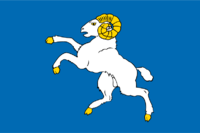- Cornouaille
-
Cornouaille is a historic region in Brittany, in northwest France. The name is identical to the French name for the Duchy of Cornwall, since the area was settled by migrant princes from Cornwall. At this time, the same language was spoken on both sides of the Channel, which evolved into a dialect, the Cornish language in the island, and into a similar dialect, the Breton language on the continent. However, in French the British Cornwall is referred to as "Les Cornouailles" in the plural to distinguish it from the Breton region.
Contents
Origin of name
Cornouaille was established in the early Middle Ages in the southwest of the Breton peninsula.[1] During this same period other British migrants established the region of Dumnonia (in Latin) or Domnonée (in French) in the north of the peninsula, taken from the British county of Devon derived from the Latin Dumnonia. We see the case of identical name for two kingdoms: for example, the "Gwened" in south Brittany (Vannes) (this region is called after its iron-age inhabitants, the "Veneti", in Breton "Weneted") and the Welsh "Gwynedd";or the Parisii in both modern Yorkshire and the area around modern Paris.
The region was first mentioned by this name between 852 and 857 when the Bishop of Saint-Corentin, Anaweten, took over "Cornugallensis". The name Cornwall or Corn-wealas is from the name of Celtic tribe, Latinized as Cornovii, meaning "peninsula people", (from the Celtic "kernou", meaning "horn" or "headland". A cognate of the English "horn", both being from PIE *ker- "uppermost part of the body, head, horn, top, summit")[2][3] with the suffix "-wealas", from "walh", a word used by the Germanic speakers, such as the English, for "a non-Germanic foreigner" especially a "Celtic speaker" but also used for Romance speakers (and is the element found in Walloon, Wales, Walachia, walnut, Wallace and Walsh[4]). The name was used in reference to the resettling of the Celts from 'Great Britain' as opposed to 'Lesser Britain', the difference between 'La Grande Bretagne' – Great Britain – and 'La Bretagne', Brittany.
History
Strong contacts between Armorica (Brittany) and southern Britain had already been noted by Julius Caesar. Native British troops were hired to support the usurpation of Magnus Maximus, who is said to have settled them in Armorica. Settlements expanded when Anglo-Saxons expanded within Britain.[5] Strong links existed in the 6th century between the British and Armorican territories. Arthurian legends make frequent reference to the maritime connections between the peoples of Wales, southern Ireland, southwest Britain and Brittany, cf. the tale of Tristram and Yseult.
The existence of a district of ancient Anjou called "La Cornuaille" has led to the hypothesis that it was a geographical or military label for all of southern Brittany as far as the northern shore of la Domnonée in the 6th or 7th century.
At the origin of this feudal county, the reigning dynasty acceded to a dukedom of the region, which then passed to the bishop of Quimper.
In Breton, Cornouaille, as well as Cornwall, is known as "Kernev" or "Bro-Gernev", and in Latin as "Cornugallia" or "Cornubia". In Cornish, "Kernev" is written "Kernow", but the pronunciation is the same.
Diocese
The name Cornouaille signifies the diocese of Quimper which persisted until the French Revolution. The diocese covered more than half of the south of Finistère, and extended over part of Morbihan and the Côtes-d'Armor. There were two arch-deacons, one for Cornouaille and one for Poher. There were also a cantor, a treasurer, a theologian and twelve canons. This episcopal division was the poorest in Brittany.
After the French Revolution, the new constitution created a diocese of Finistère, erasing that of the diocese of Kerne (diocese of Cournouaille); most of the old diocese was absorbed into the new.
Notes
- ^ Isaac Taylor, Names and Their Histories: A Handbook of Historical Geography and Topographical Nomenclature, BiblioBazaar, LLC, 2008, p.70
- ^ http://www.etymonline.com/index.php?term=Cornwall
- ^ http://www.etymonline.com/index.php?search=horn&searchmode=none
- ^ http://www.etymonline.com/index.php?term=Welsh
- ^ Léon Fleuriot, Les origines de la Bretagne, Éd. Payot, 1980
Categories:- History of Brittany
- Geography of Brittany
- Finistère
Wikimedia Foundation. 2010.


